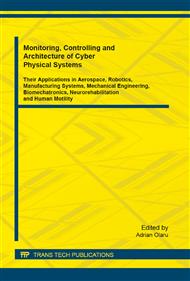p.388
p.395
p.403
p.413
p.423
p.432
p.442
p.450
p.458
Simulation and Control of the Vehicles Movement in the Case of the Overtaking Procedures
Abstract:
In this paper, a solution for the simulation and control of the vehicles movement in the case of performing the overtaking procedures is proposed. In order to design the simulation system, the mathematical modeling of the vehicle movement is made, the obtained model being based on the state space representation. Also, the real-time working of the simulator is based both on the information obtained through the usage of a communication network between the vehicles and of the GPS-measured position. The main advantage of the proposed system consists in assisting the driver to perform a correct and a safe overtaking. Another original element presented in this paper is the including of the vehicle movement model in a control structure, resulting the possibility that the overtaking to be performed with a higher efficiency. The mathematical model, respectively the simulation system were tested and validated through some simulations associated to an overtaking scenario, simulations presented in this paper, too.
Info:
Periodical:
Pages:
423-431
Citation:
Online since:
October 2014
Authors:
Price:
Сopyright:
© 2014 Trans Tech Publications Ltd. All Rights Reserved
Share:
Citation:


